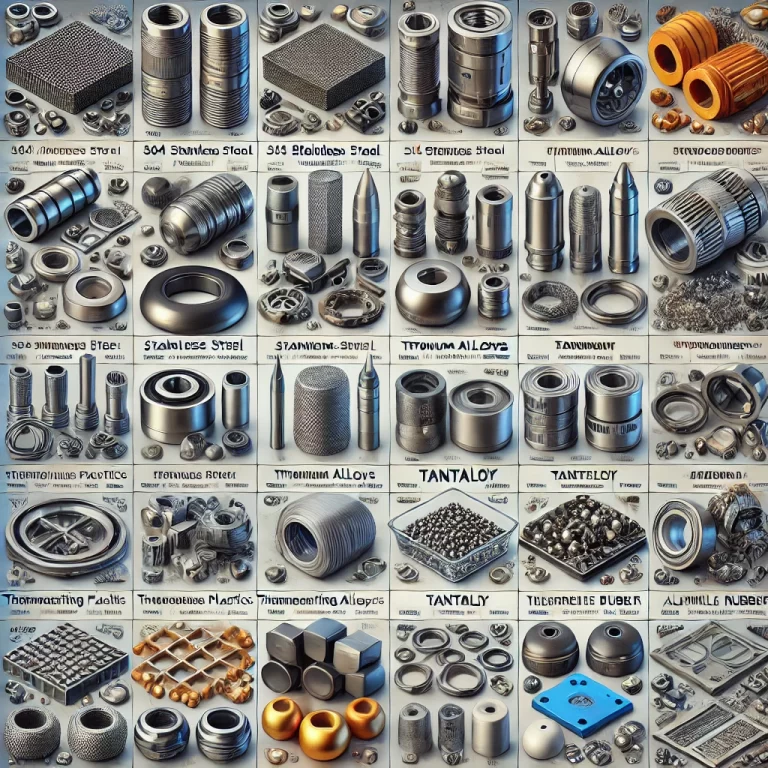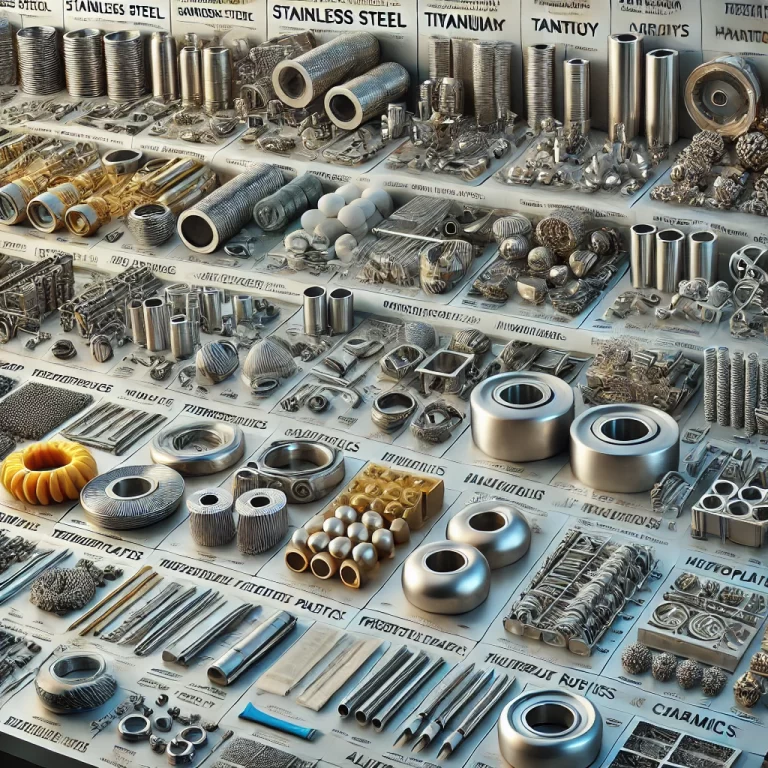1. Metallic Materials
Stainless Steel
Common types include 304 and 316 stainless steel.
304 Stainless Steel: Offers excellent corrosion resistance in atmospheric conditions, water, and weak acids or alkalis. However, it is vulnerable to concentrated acids, alkalis, and strong oxidizing agents.
316 Stainless Steel: Enhanced with molybdenum, it provides superior corrosion resistance, particularly against chloride ions. It effectively resists corrosion from seawater and chloride-containing solutions, making it suitable for harsh environments.
Titanium (Ti) and Titanium Alloys
Exhibits outstanding corrosion resistance, particularly against chlorides, hypochlorous acid, warm chlorine, oxidizing acids, organic acids, and alkalis.
Susceptible to hydrofluoric acid, fluorine, fuming sulfuric acid, and strong alkalis.
Alloys like Ti-0.3Mo-0.8Ni and Ti-0.2Pd have excellent crevice corrosion resistance, commonly used in sealing surfaces of pressure vessels.
Tantalum (Ta)
Tantalum’s corrosion resistance is comparable to glass, withstanding almost all chemical media except hydrofluoric acid, fuming sulfuric acid, and alkalis.
Nickel-Based Alloys
Alloys such as Hastelloy, rich in nickel, chromium, and molybdenum, exhibit exceptional high-temperature and corrosion resistance.
They are resistant to strong acids, alkalis, and salts, widely applied in manufacturing parts exposed to highly corrosive media in chemical instruments.
Aluminum Alloys
Display resistance to chemical and stress corrosion.
Pure aluminum (1xxx series) has the best corrosion resistance, followed by the 5xxx series. The 3xxx and 6xxx series offer moderate resistance, while the 2xxx and 7xxx series perform poorly.
Alloy selection should be based on the specific application environment.

2. Non-Metallic Materials
Plastics
Divided into thermoplastics and thermosetting plastics.
Thermoplastics such as Polytetrafluoroethylene (PTFE) offer excellent corrosion resistance, tolerating almost all chemical media. Commonly used for instrument linings and seals.
Thermosetting plastics like epoxy resin also provide good corrosion resistance and insulation, suitable for instrument housings and insulating components.
Synthetic Rubber
Known for elasticity and corrosion resistance.
Nitrile rubber is ideal for O-rings and seals, resistant to oil, water, weak acids, and alkalis.
Ceramics
Exhibit superior high-temperature resistance and chemical stability.
Resist corrosion from most acids, alkalis, and salts but are brittle with poor impact resistance. Commonly used in high-temperature instrument components.

3. Recommendations for Material Selection
Corrosive Environments: Use 316 stainless steel, titanium alloys, or nickel-based alloys for chloride-rich or seawater conditions.
Severe Chemical Exposure: Tantalum or PTFE is ideal for extreme chemical environments.
High-Temperature Applications: Ceramics or nickel-based alloys are recommended.
Sealing Components: Nitrile rubber and PTFE provide reliable performance for seals and gaskets.
4. Conclusion
Selecting the appropriate material for instruments based on corrosion resistance is crucial for durability and safety. Combining material characteristics with application requirements ensures optimal performance and extended service life.
